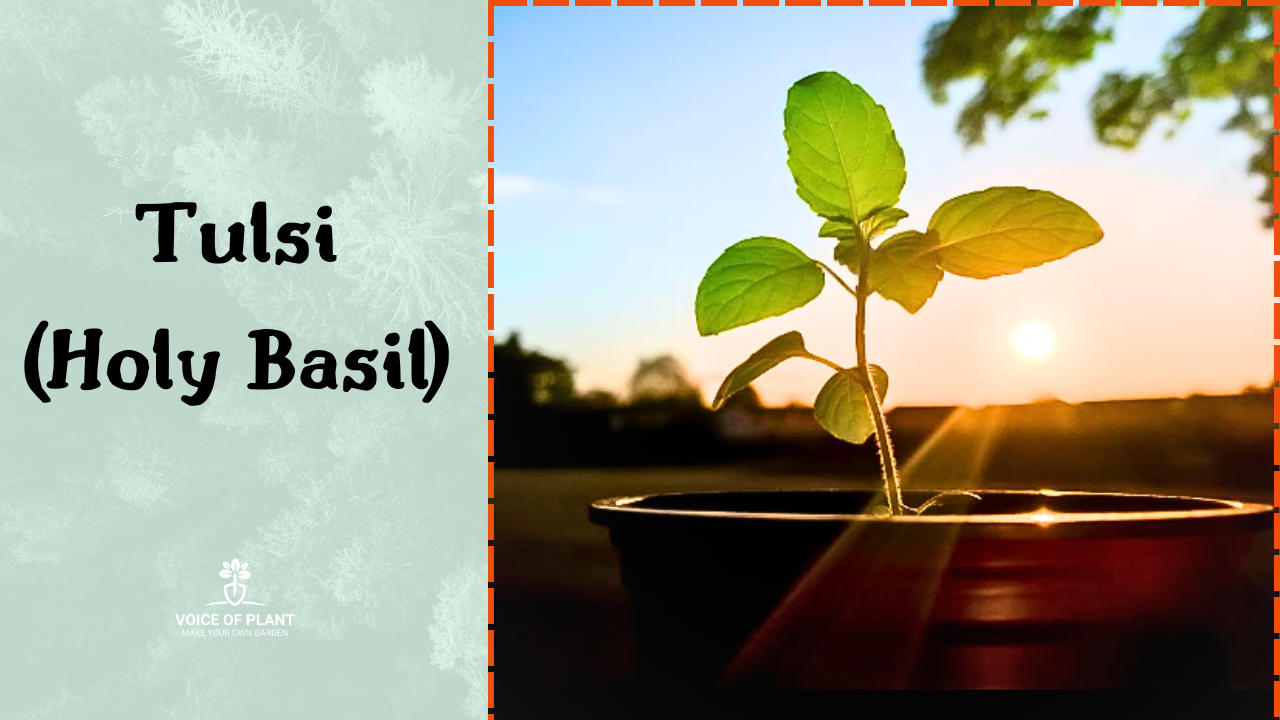Why You Should Have a Tulsi (Holy Basil) Plant At Home
Tulsi, also known as Holy Basil, Vrinda, and Vaishnavi, among other names, is a popular plant in many regions. It is a herb and holds immense significance in Hindu culture. It is revered for its medicinal properties and spiritual importance.
From spiritual significance to medicinal properties, Tulsi offers countless reasons to consider having it in your home. Let’s delve into the top 10 reasons why Tulsi should find a place in your home.
Why You Should Have a Tulsi (Holy Basil) Plant At Home
1. Auspicious Plant (Holy)
Tulsi is revered as a sacred plant in Hindu culture.
- It is often worshipped and considered an embodiment of the goddess Lakshmi.
2. Lucky Plant and Gives Positive Vibes
- The Tulsi plant brings peace, happiness, wellness, positive energy, and good luck to a home.
3. Medicinal Plant
Tulsi is a powerhouse of medicinal properties. Its leaves are rich in antioxidants, essential oils, and other bioactive compounds that offer a range of health benefits.
- From boosting immunity to relieving respiratory ailments, Tulsi is a natural remedy for many health issues.
4. Perfect for Container Gardening
Tulsi is well-suited for container gardening, making it an ideal choice for urban dwellers with limited space.
- You can easily grow Tulsi in pots or containers on your balcony, terrace adding a touch of greenery to your living space.
5. Easy to Care
One of the best things about Tulsi is its low-maintenance nature.
- It requires minimal care and attention, making it suitable for both novice and experienced gardeners.
- With regular watering and occasional pruning, Tulsi can thrive and flourish without much fuss.
Also Read: Watering Tips for Healthy Tulsi Plant
6. Perennial Plant
Tulsi is a perennial plant, meaning it can live for several years with proper care.
- Its longevity ensures that you can enjoy its beauty and benefits for a long time, making it a worthwhile investment for your home garden.
7. Antibiotic and Pest Repellent Plant
Tulsi possesses natural antibiotic properties that help boost the immune system and fight off infections.
- Additionally, its strong fragrance acts as a natural repellent against common garden pests like mosquitoes, flies, and ants, reducing the need for chemical pesticides.
8. You Can Grow from Seeds and Cuttings
Whether you prefer starting from scratch with seeds or opting for the convenience of cuttings, Tulsi offers both options.
- You can easily propagate Tulsi by planting seeds in well-draining soil or rooting cuttings in water, giving you flexibility in how you choose to grow this versatile plant.
Also, read: Grow Tulsi plant from seeds
9. Not a Very Heavy Feeder Plant, Does Not Need Much Fertilizer
Tulsi is not a demanding plant when it comes to nutrients.
- A balanced fertilizer applied once or twice a year is sufficient to promote healthy growth, making it an economical choice for home gardening.
Also Read: How to Care Tulsi Plant
10. Can Be Kept in a Balcony of 3 to 4 Hours of Sunlight
Tulsi is a sun-loving plant that thrives in full sunlight.
- However, it can also tolerate partial shade, making it adaptable to various light conditions.
- If you have a balcony or terrace that receives 3 to 4 hours of sunlight daily, it’s the perfect spot to place your Tulsi plant.
FAQs (Frequently Asked Questions) on Tulsi Plant
1. Can I Grow Tulsi plant in balcony?
Ans: Yes, Tulsi can be grown in balcony as long as it receives sufficient sunlight.
2. How Often Should I Water My Tulsi Plant?
Ans: Water Tulsi regularly, allowing the soil to dry out slightly between waterings.
3. Is Tulsi Easy to Care For?
Ans: Yes, Tulsi is relatively low-maintenance and can thrive with minimal attention.
4. Can I Use Tulsi Leaves for Cooking?
Ans: Absolutely! Tulsi leaves add a unique flavor to various dishes and beverages.
Follow our Social media channel:
1. Voice of Plant – YouTube Channel
2. Voice of Plant Facebook Page
3. Instagram Voice of Plant Channel
Happy Gardening!
